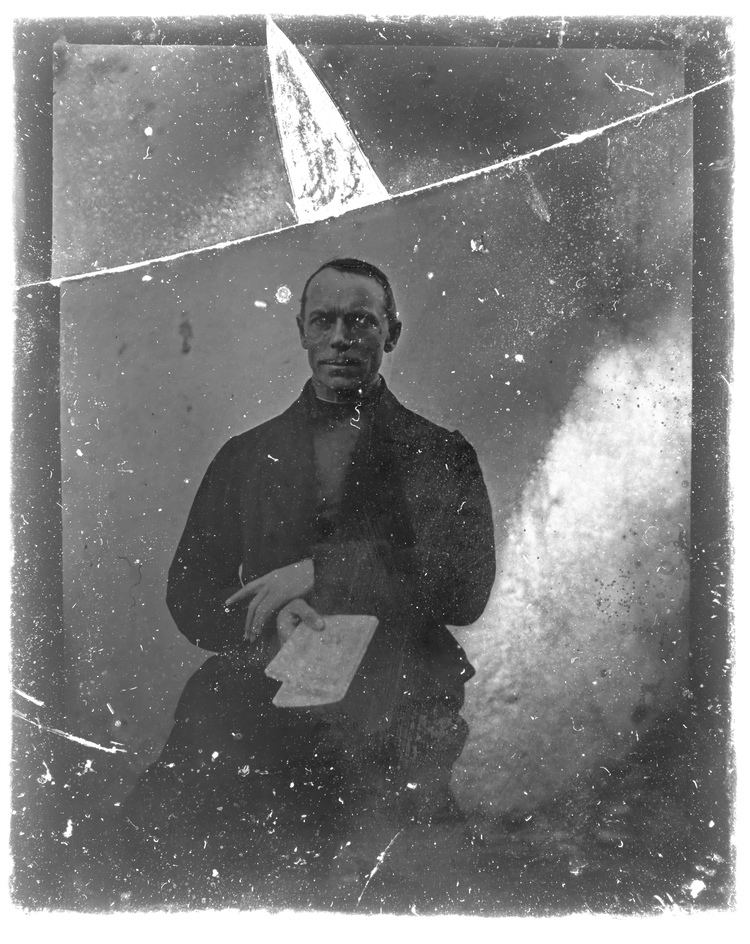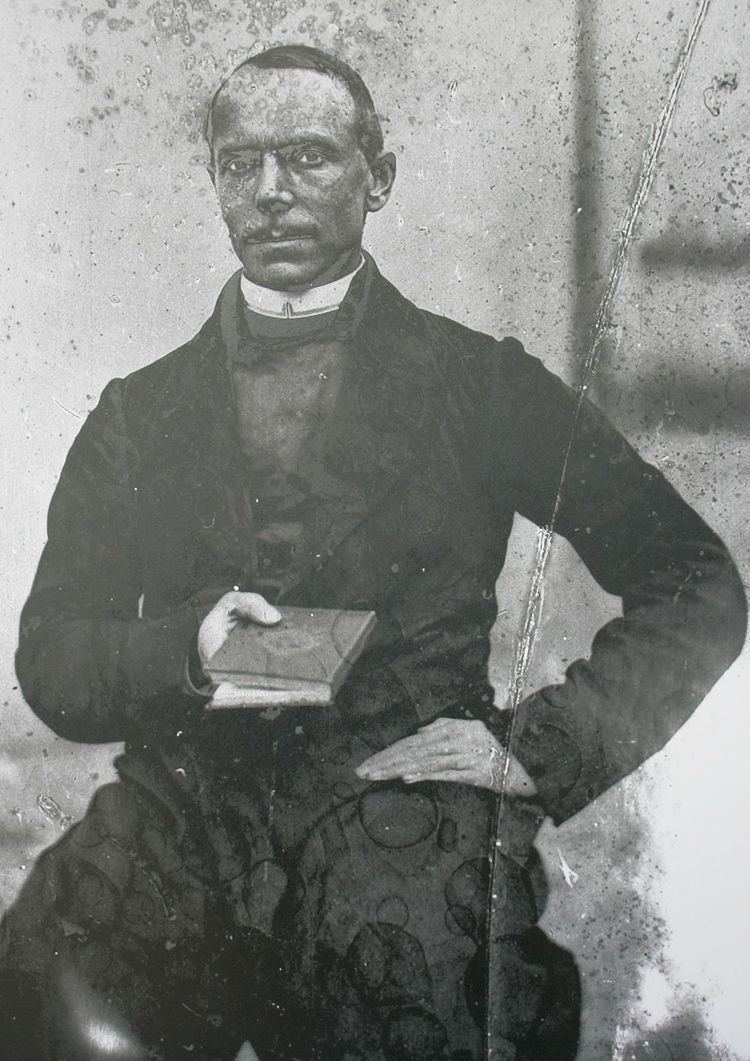Occupation priest Known for inventor, photographer | Name Johann Pucher Role Photographer | |
 | ||
Full Name August Johann Pucher Died August 7, 1864, Kranj, Slovenia | ||
Johann Augustin Pucher (Slovene: Janez Avguštin Puhar or Ivan Pucher; 26 August 1814 – 7 August 1864) was a Slovene priest, scientist, photographer, artist, and poet who invented an unusual process for making photographs on glass.
Contents

Although his were not the first glass photographs, Pucher's process was unique. It was the only 19th-century photography technique that was not based on expensive silver halide chemistry but was still sensitive enough to use in a camera, with exposure times comparable to those of the daguerreotype and calotype. (Other non-silver processes, such as the cyanotype, were practical only for making prints or photograms in direct sunlight.) Modern testing of Pucher's photographs has confirmed their chemically unusual nature. However, his process was never commercialized, and attempts to recreate it based on published information have been unsuccessful.

Biography
Pucher was born in Kranj on 26 August 1814. At the time, the present-day Slovenia was part of the Austrian Empire and was called the Duchy of Carniola.
As a schoolchild, Pucher was interested in art, languages, and the natural sciences, especially chemistry and physics. He wanted to study art, but obeyed his mother's wish and became a Catholic priest. However, he continued to experiment in photography, art, and music. When the French Academy of Sciences announced the invention of the daguerreotype on 19 August 1839, Pucher quickly mastered the process, but it was too expensive, so he developed his own way of making photographs. On 19 April 1842, he invented a photographic process on glass that he called the hyalotype, or "svetlopis" in Slovene. His photos are also called puharotypes, in his honor. The first report about his invention was published in the newspaper Carniolia in 1841.
While living in Bled, Pucher met a French viscount, Louis de Dax, who wrote about him in the Parisian magazine La Lumière. The church then moved Pucher to a small village, Cerklje, where his contacts abroad lessened. Ultimately, he became sick from the harmful substances used in his experiments and died at the age of 49.
Hyalotype process
According to Pucher's records of his photographic process, he coated a small glass plate with a layer of light-sensitive sulfur, exposed it to iodine vapors, and inserted the prepared plate into a camera. He then poured mercury into a metal container, placed the mercury at the bottom of the camera, and heated it from below. He exposed the prepared plate to light for 15 seconds, and mercury vapors coated the exposed places on the picture. Pucher strengthened the picture with bromine steam and fixed it by wrapping it with alcohol. Finally, he preserved the photo with varnish.
The advantages of Pucher's procedure included a shorter exposure time (15 seconds, which allowed him to make portraits), a positive image, and the possibility of reproduction.
Pucher was not the first to try to create photos on glass: A Frenchman, Abel Niépce de Saint-Victor, reported his own invention to the French Academy of Sciences in 1847. It was not until January 1851 that the Austrian Academy of Sciences published a report on Pucher's method.
Surviving work
Known photos by Pucher, mostly kept in the National Museum of Slovenia and in the Museum of Architecture and Design in Ljubljana, are:
Reproductions
Lost photos
Most of Pucher's photos have been lost, including:
Poetry
Pucher wrote at least 15 poems in Slovene and 4 in German. Some of them were put to music by known composers.
Awards and honors
In recognition of Pucher's contribution to the Slovene national identity and the development of photographic science, Slovenia declared 2014 to be Pucher's Year. The honorary patronage of the jubilee was approved by President Borut Pahor. A yearlong program of events in Slovenia and abroad was organized in cooperation with many municipalities and institutions to celebrate the 200th anniversary of his birth.
Several items and locations are named after Pucher:
